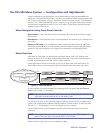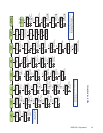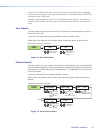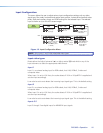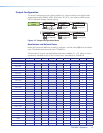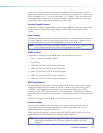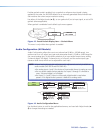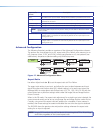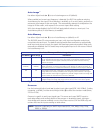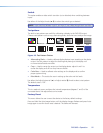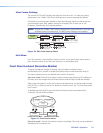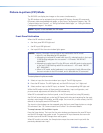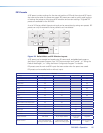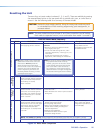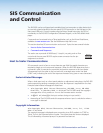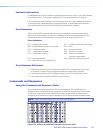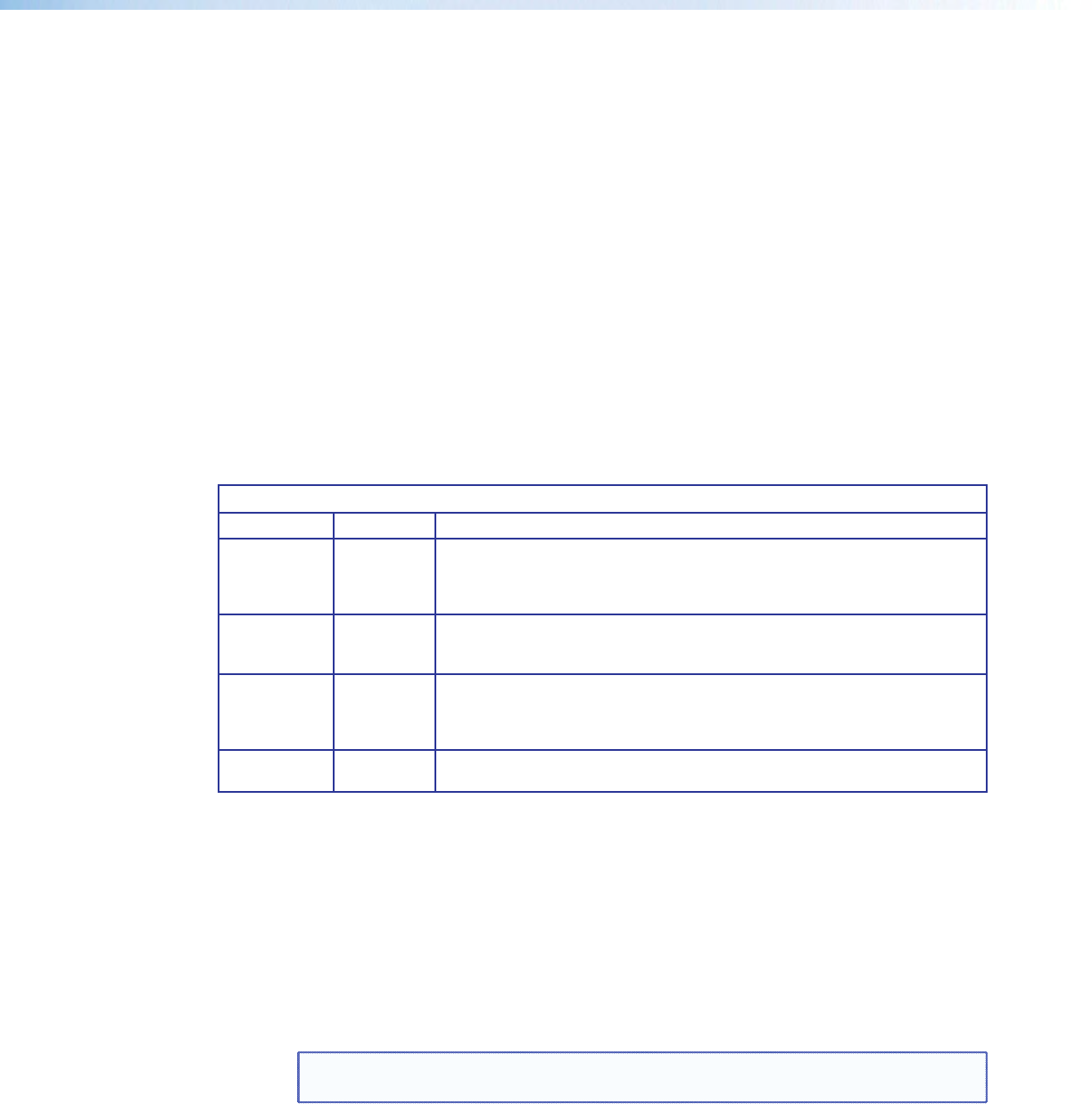
Auto-Image
™
Use either Adjust knob ([ {) to turn Auto-Image on or off (default).
When enabled and a new input frequency is detected, the DVS rst applies an existing
Auto Memory for the signal (if Auto Memory is enabled), or if no entry exists, performs an
automatic Auto-Image on the new signal. This automatically attempts to size/position the
image to fill the screen, with respect to the current Aspect Ratio setting.
With Auto-Image disabled, the DVS 605 will apply default values to a new input if no
Auto Memory exists (if Auto Memory is enabled).
Auto Memory
Use either Adjust knob ([ {) to turn Auto Memory on (default) or off.
The DVS 605 stores 32 auto memories per input, with input conguration and picture
control data for each input. The default settings enable these memories to automatically
recall input and picture controls for signals that have been previously applied. When auto
memories are disabled, the DVS treats every newly applied input as a new source. Default
for Auto Memory is on.
How Auto Memory and Auto-Image Interact
Auto Memory Auto-Image Information
On On “New” signals/rates that have not been previously detected by the DVS are initially
set up using default parameters, then Auto-Image is automatically applied and values
stored. The next time that signal is detected, the values stored in the auto memory
location are applied.
On
(Default)
Off
(Default)
“New” signals/rates that have not been previously detected by the DVS are set up using
default parameters. If manual input and/or picture settings are made to the input, an
auto memory location is created and recalled each successive time the input is detected.
Off On Each change in input sync, input switch, or power cycle triggers an automatic Auto-
Image. When auto memory is disabled, each change in sync is treated as a new signal
and an automatic Auto-Image is triggered. Any manual changes made to the image and
picture controls are lost each time a new rate is detected.
Off Off Each change in input sync causes default values to be applied to the rate. Any manual
changes made to the image and picture controls are lost when a new rate is applied.
Figure 18. Auto Memory and Auto-Image Details
Overscan
Use the horizontal Adjust knob ([) to select input video type (RGB, YUV, RGBcvS, S-video,
composite, or HDMI), and the vertical Adjust knob ({) to select the overscan mode (None,
2.5% or 5.0%).
Overscan is specic to each input signal type. This zooms and crops SMPTE inputs to
mask edge effects and ancillary data that are common in broadcast signals. Issuing an
Auto-Image with overscan enabled, runs an Auto Phase routine (YUV and RGB only) and
centers and sizes the input according to table values.
NOTE: Overscan is valid only on SMPTE input rates (NTSC, PAL, 480p, 576p, 720p,
1080i, or 1080p).
DVS 605 • Operation 21



